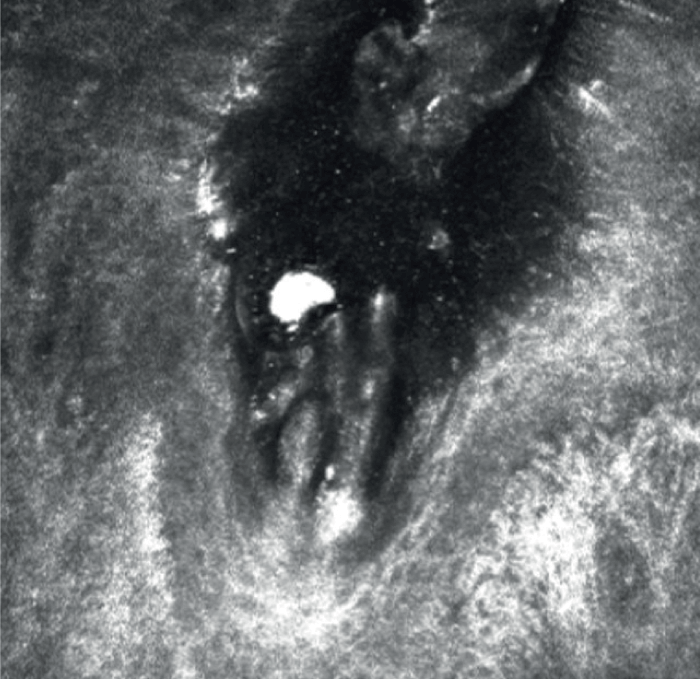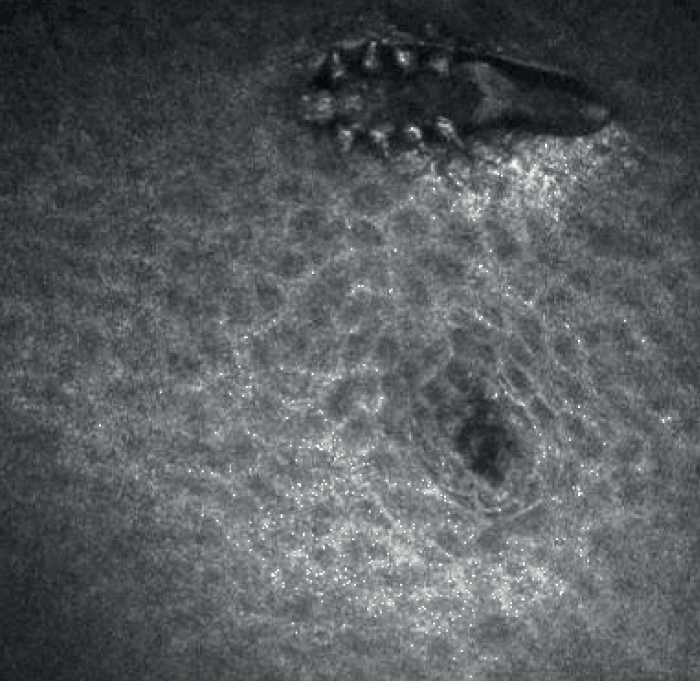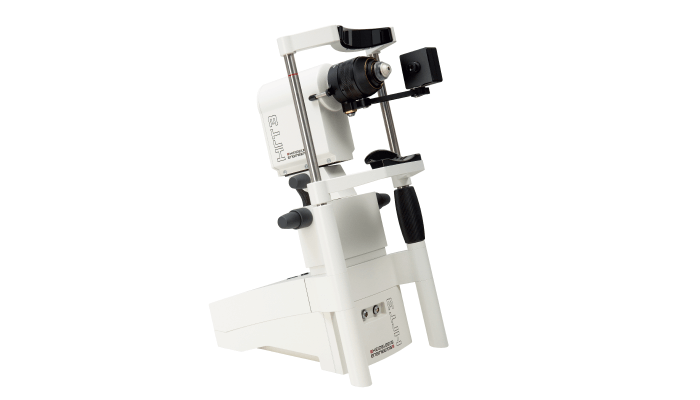
Reintroducing the HRT3 RCM by Heidelberg Engineering – a compact ophthalmic device that provides eye care specialists with a corneal microscope for the precise in vivo assessment of corneal layers and other ocular structures.
The HRT3 RCM uses confocal scanning laser microscopy to deliver high-resolution images of the cornea and external ocular structures, such as the conjunctiva or the limbus. Scanning the cornea with a field of view of up to 400 x 400 μm, the HRT3 RCM allows clinicians to acquire unique en face images of corneal cells, identify keratocytes subpopulations, and visualize details of the corneal subbasal nerve plexus.
Different acquisition modes further support the detailed analysis of cellular structures, allowing users to:
• Acquire single scans at any depth of the cornea
• Record a film sequence to dynamically explore areas of interest
• Perform a volume scan to receive a stack of images at different depths
• Use the semi-automated endothelial cell count to receive information about the morphology of this layer.
Comprehensive in vivo assessment with the HRT3 RCM empowers clinicians to diagnose and monitor corneal abnormalities, conduct pre- and post-surgery evaluations, analyze the corneal nerve structure in diabetic patients, and also evaluate dry eye disease.
Assess corneal nerves at the microscopic level (Figures 1 and 2)
With the HRT3 RCM, it is possible to examine the corneal subbasal nerve plexus in detail; high-resolution images show the contrast in corneal nerve structures of a diabetic eye relative to a healthy eye.
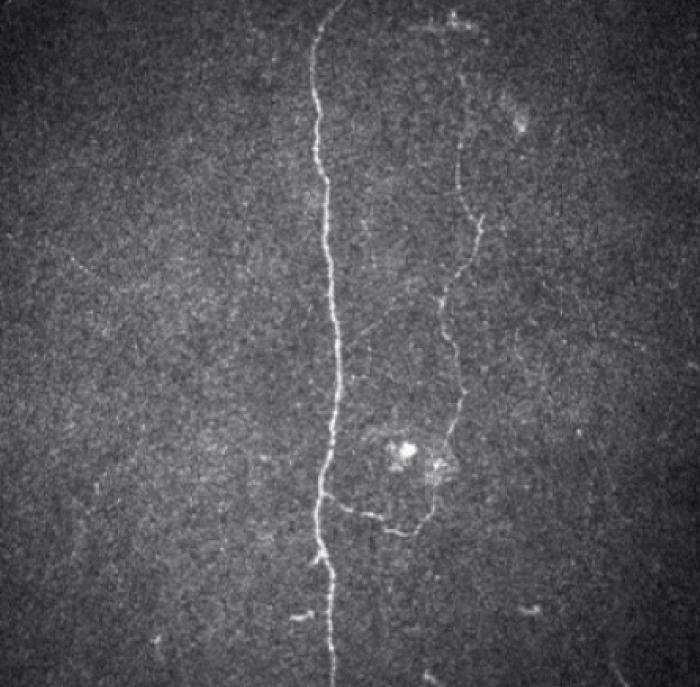
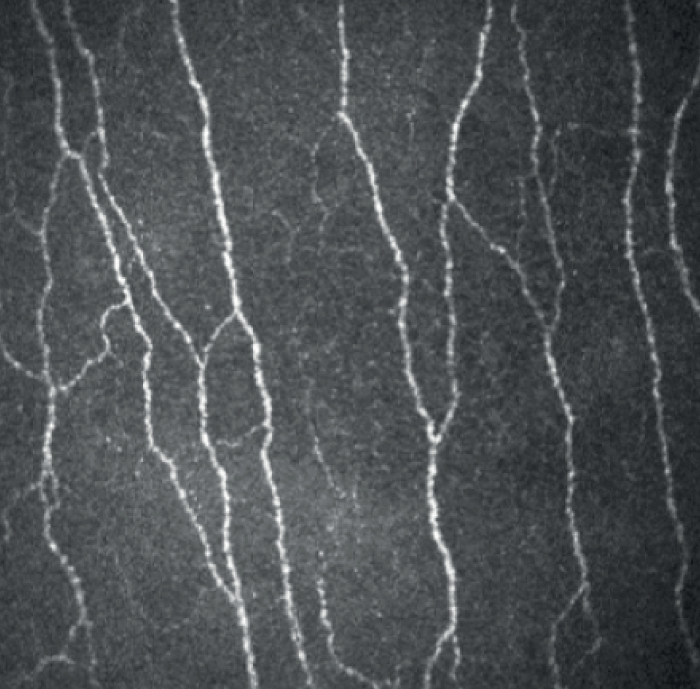
Investigate the conjunctiva, the limbus, the eye lid or meibomian glands to assess pathologies that affect these external ocular structures (Figures 3 and 4)
The HRT3 RCM can also aid in the assessment of Demodex blepharitis. These images show parts of a Demodex folliculorum and the whole body of a Demodex sebaceous that has climbed out of a meibomian gland orifice.
